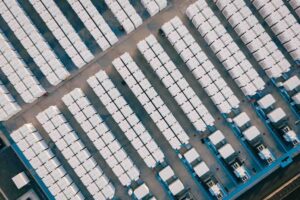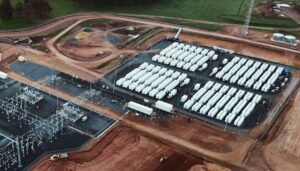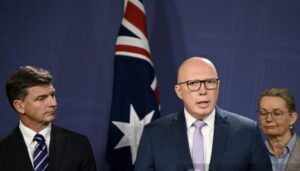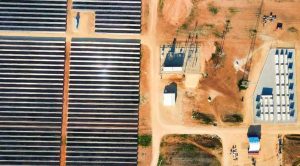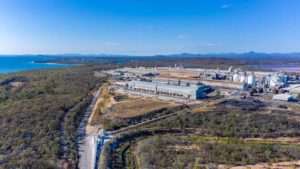Two news stories over the weekend give a chilling insight into what might await the Australian renewable energy industry under a Federal Coalition government.
The first story was mostly symbolic in nature. The Newcastle Herald reported that the only wind turbine in Newcastle, the 600kW Kooragang turbine that was constructed in 1997 to “promote the emerging green energy market” is to be removed by Ausgrid – to make way for a new coal loader.
It is just a single turbine but, amazingly, apart from a small demonstration turbine at the CSIRO energy centre nearby, it is the only one in NSW north of Sydney. In fact, going north, you need to travel 2,000kms to the Atherton Tablelands before coming across another commercial wind turbine, 20 small towers amounting to 12MW at Windy Hill in the Atherton Tablelands. There are two other small turbines on Thursday Island, at the tip of the country and that is it – just 12.45MW of wind energy north of Sydney, out of a total of 2,500MW across the country.
How many other turbines are built in NSW will likely be influenced by key decisions being made by NSW Cabinet as early as today about rules governing wind farm developments and the state’s renewable energy plans. That, of course, and the fate of the large-scale renewable energy target – a federal decision.
The second story was not just one, but a barrage of media placements from Queensland Premier Campbell Newman and others seeking to lay the blame for the state’s stunning 22.5 per cent average rise in electricity costs in 2013/14 on green energy schemes, glossing over the fact that the overwhelming majority of the bill increases come because the cost of the billions of dollars of network upgrades is being borne by the consumer.
These are dangerous times for the renewables industry in Australia, particularly those looking to construct some $20 billion of utility-scale installations – be they wind or solar. Newman threw in large-scale renewables as part of the cause of rising prices, but the analysis by the Queensland Competition Authority shows that only 3.5 per cent of the average customer bill of $1451 a year will go to support the renewable energy target, including the small and large-scale schemes. That’s less than $1 a week for the average household.
Indeed, as this table below shows, the cost of the RET actually fell $6 in 2013/14, while network costs will rise $127 and the retailer’s margin (including the headroom they receive so they can offer “discounts” to certain customers) will rise $60.
And this is the make-up of the bills going forward.
Further analysis of the QCA data shows that the cost of the large-scale component is even less – amounting to $17 a year out of a $1451 bill for the “median household” (just 30c a week), or $25 (or 50c/week) for a typical four-person household with a total bill of $2005.
But in the popular debate around power prices, facts don’t count for much.
Australia’s largest utility Origin Energy has virtually declared war on renewables, arguing again on Friday that they are becoming a costly burden on households. It’s an argument that the state governments such as Newman’s have been keen to embrace.
For the record, the Climate Change Authority, in its review completed late last year, said the large-scale renewable energy target would add between $12 and $64 to the average household’s annual bill. The upper range assumed there was no impact on wholesale prices from the “merit order” effect, where prices on the energy market are forced down by the presence of more wind power. It said even slashing the RET target from 41,000GWh to 26,400GWh would only save around $17 a year from consumer bills, but would cause huge damage to the renewables industry.
But for now, it’s the ambivalence of the Abbott government on its clean energy policies that is effectively strangling the industry.
It’s bitterly ironic because Australia last week was rated as the fourth most attractive destination for renewable energy investment in the world by Ernst & Young. But that was based on the policies that are currently in force – such as the renewable energy target, and the presence of the Clean Energy Finance Corp and the Australian Renewable Energy Agency.
But the large-scale renewable energy industry is stalled at the gate – not because of these current policies – but because the industry and those that would finance it are making judgments about what will become policy once the Abbott team wins the September 14 poll. Abbott has yet to be elected, but his policies already hold sway, and have done so for months.
Its position on the renewable energy target – declaring its bipartisan support but insisting that yet another review is held in 2014 rather than 2016 – is taking away the certainty that the industry craves. The federal Coalition is under enormous pressure from all the state-based conservative governments to dilute the RET, or remove it altogether, as well as from and the large utilities such as Origin, EnergyAustralia and the biggest generators.
They all argue that the costs of the RET put a burden on consumers, but the QCA data – and the CCA conclusions – put a lie to that. The real impact is on the revenue and the bottom line of the state and privately owned generators and utilities because they have overbuilt in recent years and don’t want their business models further undermined by more renewable energy capacity.
The federal Coalition is also promising to abolish the CCA, the independent body that ruled in favour of maintaining the fixed 41,000GWh renewable energy target. Not that it has been bothered by such independent advice before. Ian Macfarlane, who is likely to be the new energy minister, brought the Howard’s government’s modest renewable energy target to an abrupt and damaging close when he was in the same role a decade ago, despite the recommendations of the Tambling inquiry to extend it.
That decision brought the Australian wind industry to a halt, forcing the closure of several newly created manufacturing plants. Many of those manufacturing jobs – in wind and solar – are now going to other countries such as South Africa, Brazil, Malaysia and Thailand which have much stronger and consistent support for large-scale renewable generation.
The other great hope for the renewables industry is the Clean Energy Finance Corp, which is designed to encourage and accelerate the construction of newer technologies such as large-scale solar which have yet to be deployed in Australia.
But the Coalition is opposing that too, vowing to dismantle it and trying to force it stop making loans before the care-taker period, despite enormous attempts by the CEFC to explain that it is actually self-funding and working on a commercial basis.
Meanwhile, one of the Coalition’s more colourful opponents, Alby Shultz, has resumed his attack on the wind industry, which he described as the “biggest government sponsored fraud in the history of this country.” He told federal parliament last week that this “multi-headed industrial Hydra is aided and abetted in its plundering of the public purse by incompetent governments, friendly pro-wind bureaucrats and a variety of individual parasites living off the taxpayer pot-of-gold renewable-energy-certificate process.”
He goes on. And on. Shultz is retiring at the next election, and will be replaced by Angus Taylor, a former consultant who is hailed as a potential rising star of the Liberal Party. But this may not be a sign of progress because he, too, hates wind energy – describing it as too expensive. He, along with Shultz, will reportedly speak at an anti-wind rally in Canberra in a fortnight.




